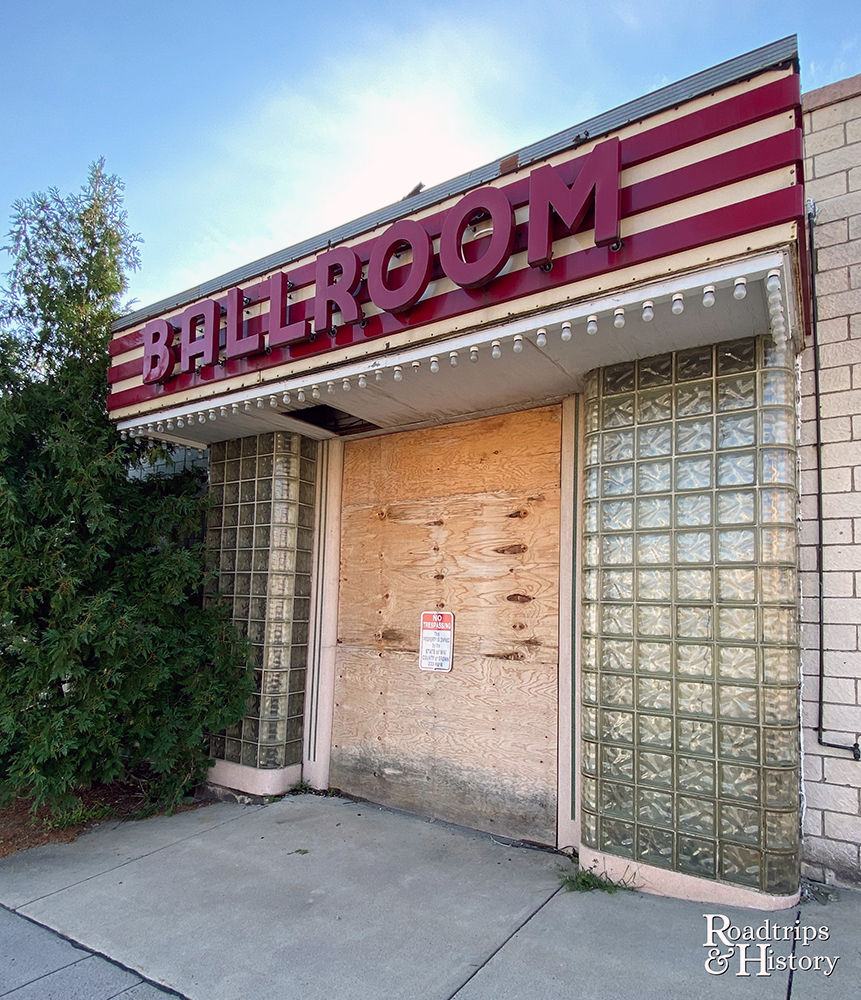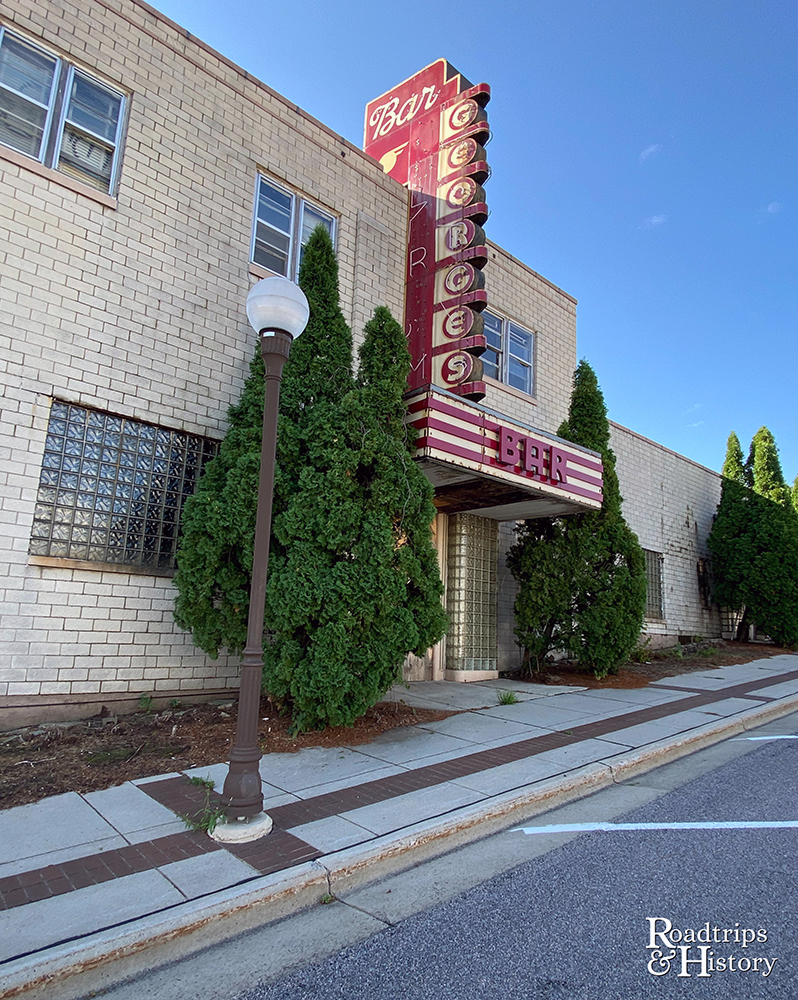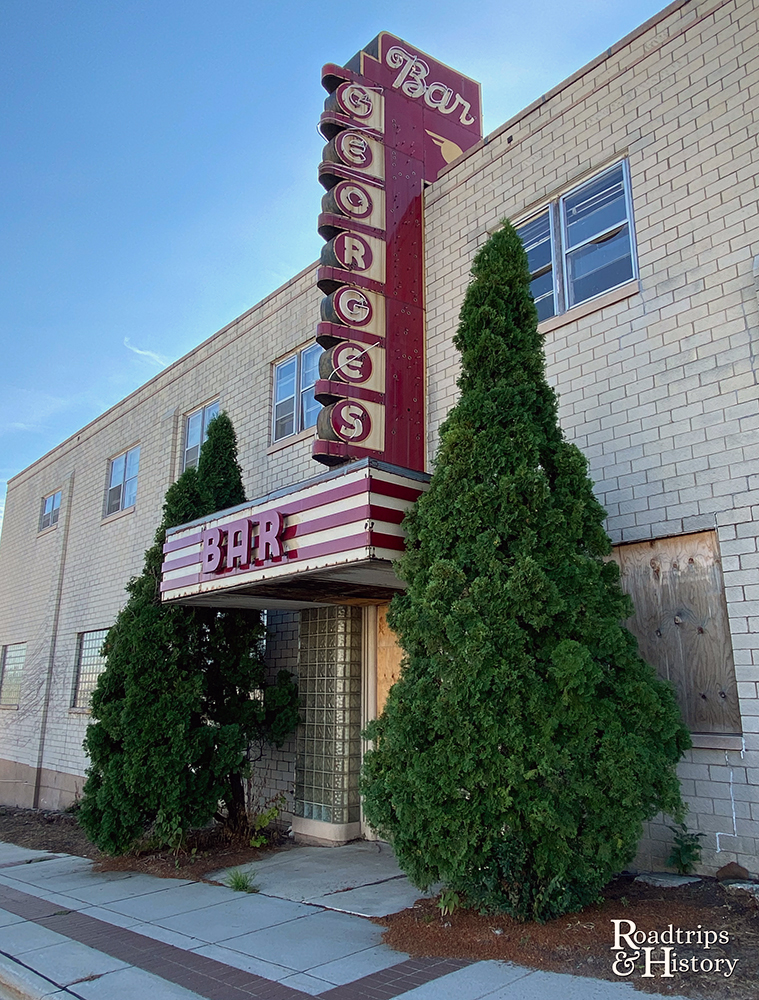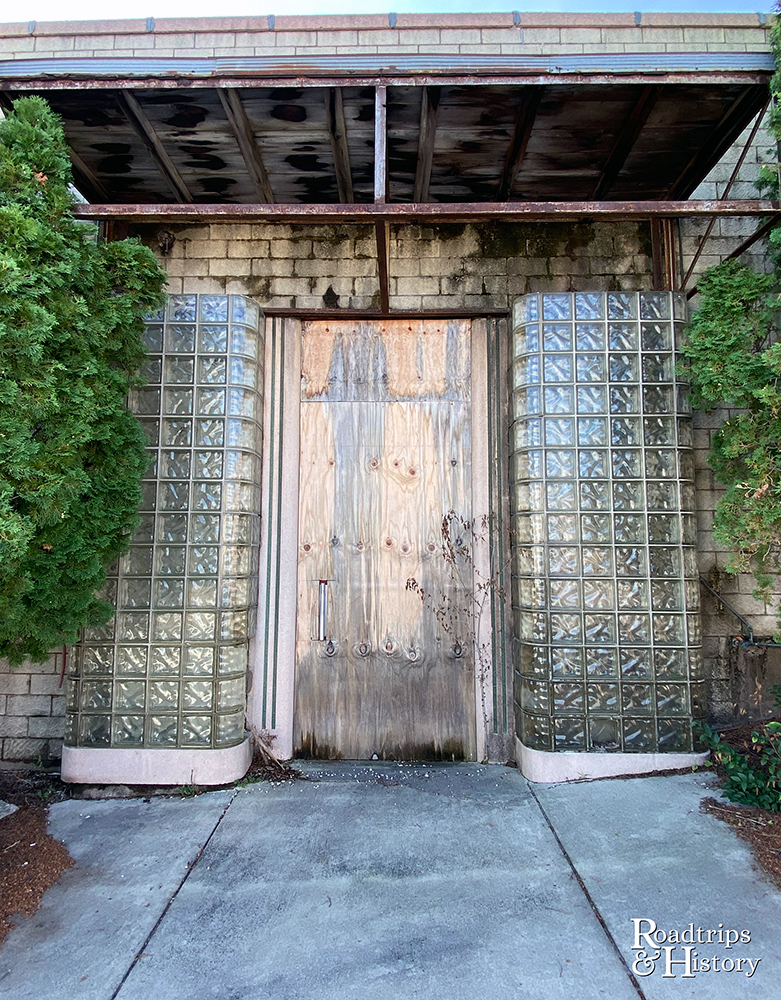George Neuwirth operated a popular bowling alley and bar throughout the 1930s and 1940s in New Ulm, Minnesota. He saw an opportunity to expand his offerings as towns across America looked to the future with a euphoric post-war vision. In 1945, George was granted special permission by the Civilian Procurement Administration to build a new amusement palace on the corner of German and Center Streets downtown.


Dance! Dance! Dance!
George’s Greater Amusement Center opened in October 1947. The 32,000 square foot Art Deco building was constructed with cream-colored brick with entrances accented in Artstone. Inside, the terrazzo and hardwood floors gleamed below contemporary chandeliers and accent lighting.
The ballroom boasted a dance floor that was 86 feet long and 70 feet wide. Eleven hand-painted mural panels decorated the walls in the ballroom and a large stage for popular touring bands. George’s soon became the center of a vibrant music scene, hosting bands from just about every genre. In the early years, big bands and polka troupes like Lawrence Welk, Henry James, and the Dorsey Brothers drew thousands of people downtown on weekends.
The Art Deco ballroom was the center of entertainment on weekends. But guests could also enjoy the eight bowling alleys, grab a drink at what was advertised as the longest bar in the northwest, or have a bite to eat in one of the 165 cozy booths in the restaurant. The large building could accommodate up to 3,000 people! For perspective, the total population of New Ulm in 1950 was just over 9,000.
George’s Greater Amusement Center was renamed George’s Ballroom and was generally known as George’s Bar, or just George’s. The bar and bowling alleys closed in the early 1960s. The ballroom remained a center of live music as big bands gave way to rock and country music acts. As the 1980s came to a close, the acts playing George’s became sporadic at best. The ballroom closed in 1991.


End Of An Era
After George died in 1995, the building sat vacantly decaying for more than a decade and set a series of ownership issues in motion. The property was acquired by Brown County in 2004 as a tax foreclosure. It was then sold at auction with the hope of reopening the facility. The new owners managed to open part of the building again, but only for a year or two. In 2019, the owners owed more than $25,000 in back taxes, so the property ended up in the hands of Brown County again. This time, the building had been decaying for an additional 15 years, and trees and shrubs grew through the top of the building’s roof.
The county board of commissioners approved the demolition of the old ballroom in 2019. Residents have been divided on what should happen to George’s. Some are still advocating for restoration. This is especially true in a town that prides itself on its history and markets itself as a destination that has preserved its character and culture. Others welcome demolition and an opportunity to build something new for future generations. As of June 2022, George’s Ballroom still stands.
Update
Demolition of George’s Ballroom is scheduled to begin on Monday, December 2, 2024.
